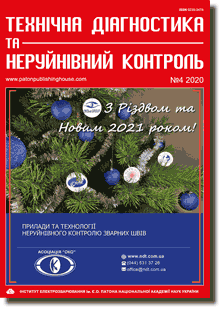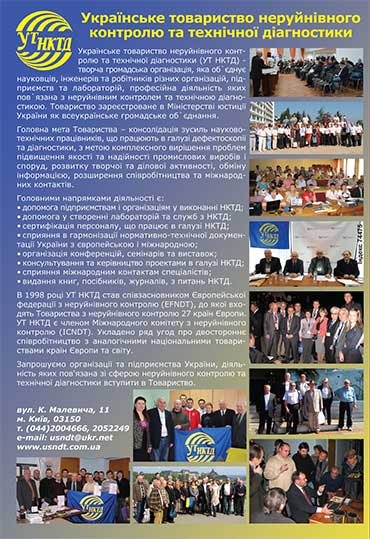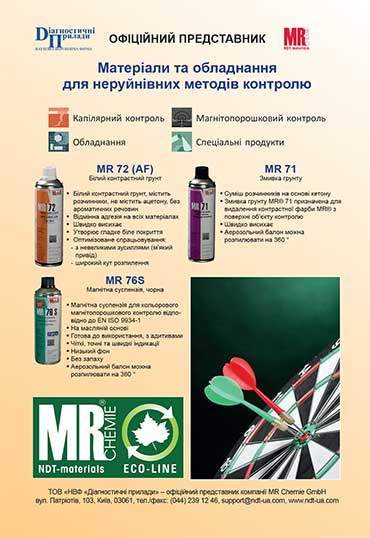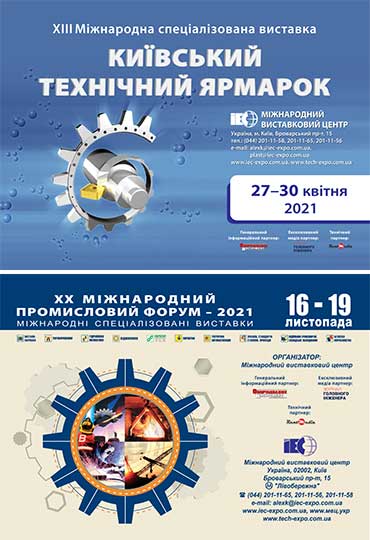| 2020 №04 (02) |
DOI of Article 10.37434/tdnk2020.04.03 |
2020 №04 (04) |

"Tekhnichna Diahnostyka ta Neruinivnyi Kontrol" (Technical Diagnostics and Non-Destructive Testing) #4, 2020, pp. 17-22
Increase of reliability and extension of service life of windpower units due to application of regulation means and diagnostic systems harmonized with the european standards
Yu.I. Hyzhko1, V.M. Holovko2, M.S. Hutorova1, V.M. Zvarych1, V.P. Kohanievych2, S.O. Kudrya2, M.V. Myslovych1, L.B. Ostapchuk1
1Institute of Electrodynamics of NASU. 56 Prosp. Peremohy, 03057, Kyiv, Ukraine. E-mail: ied1@ied.org.ua
2Іnstitute of Renewable Energy of NASU. 20-a Hnat Khotkevich str., 02094, Kyiv, Ukraine. E-mail: info@ive.org.ua
Peculiarities of application of linear AR and ARMA processes as mathematical models of vibration signals from own needs engines of TPP and CHPP and engines of wind-power units were studied. Features of construction of the prototype of a wireless information-measuring system (IMS) for diagnosing the condition of such engines were determined. The paper gives the results of experimental studies of application of IMS prototype in the case of investigation of own needs engine vibrations, namely of DKRAI – 4519-4V engine at Darnitsa CHPP, using international standards. New mathematical models were derived of static and dynamic processes in aeromechanical regulation means of rotors of wind-power units (WU) with centrifugal regulator, their experimental verification was conducted and they were used as a basis for development of a procedure for selection of the parameters and characteristics of aeromechanical regulation means of rotors of wind-power units with centrifugal regulator, and of a procedure of determination of loads and strength analysis of wind-power unit blades, which will be used by developers when designing new wind-power units. 8 Ref., 3 Fig.
Keywords: vibration diagnostics, wind generators, own needs engines, wireless information-measuring system
Received: 07.09.2020
References
1. Bayar, T. (2015) Putting wind to the test. Power Engineering Int., 12, 16–18.2. Hoelf, D. (2016) When virtual meets reality. Ibid, 9, 26–27.
3. Manning, L. (2014) Bearing up to turbine testing. Ibid, 2, 32–34.
4. Zvarych, V.N. (2019) Application of inverse problem solutions of autoregression linear processes for construction of vibrodiagnostic systems of assemblies of wind-power station generators. Vidnovlyuvana Energetyka, 3, 48-57 [in Ukrainian].7 https://doi.org/10.36296/1819-8058.2019.3(58).48-57
5. Hertsyk, S.M., Hyzhko, Yu.I., Zvarych, V.M., Myslovych, M.V., Ostapchuk, L.B., Sysak, R.M. (2018) Peculiarities of application of independent transducers for diagnostics of electrotechnical equipment taking into account the modes of its operation. Tekhnichna Elektrodynamika, 5, 73-79 [in Ukrainian]. https://doi.org/10.15407/techned2018.05.116
6. (IES 61400-2:1996, IDT): DSTU IES 61400-2–2001: Wind turbine generator systems. Pt 2: Safety of small wind turbines. Valid from 2001-12-28. Kyiv, Derzhspozyvstandart Ukrainy, 2002 [in Ukrainian].
7. GERMANISCHER LLOYD: Vorschriften und Richtlinien, Teil 1: Windenergie, Richtlinien fuеr die Zertifizierung von Windenergieanlagen, K. 1-10. – 1993 mit Ergänzung 1994 (in German).
8. Todd, R.W. (1979) Small scale wind energy systems. Wind Engineering, 4, 36–39.




